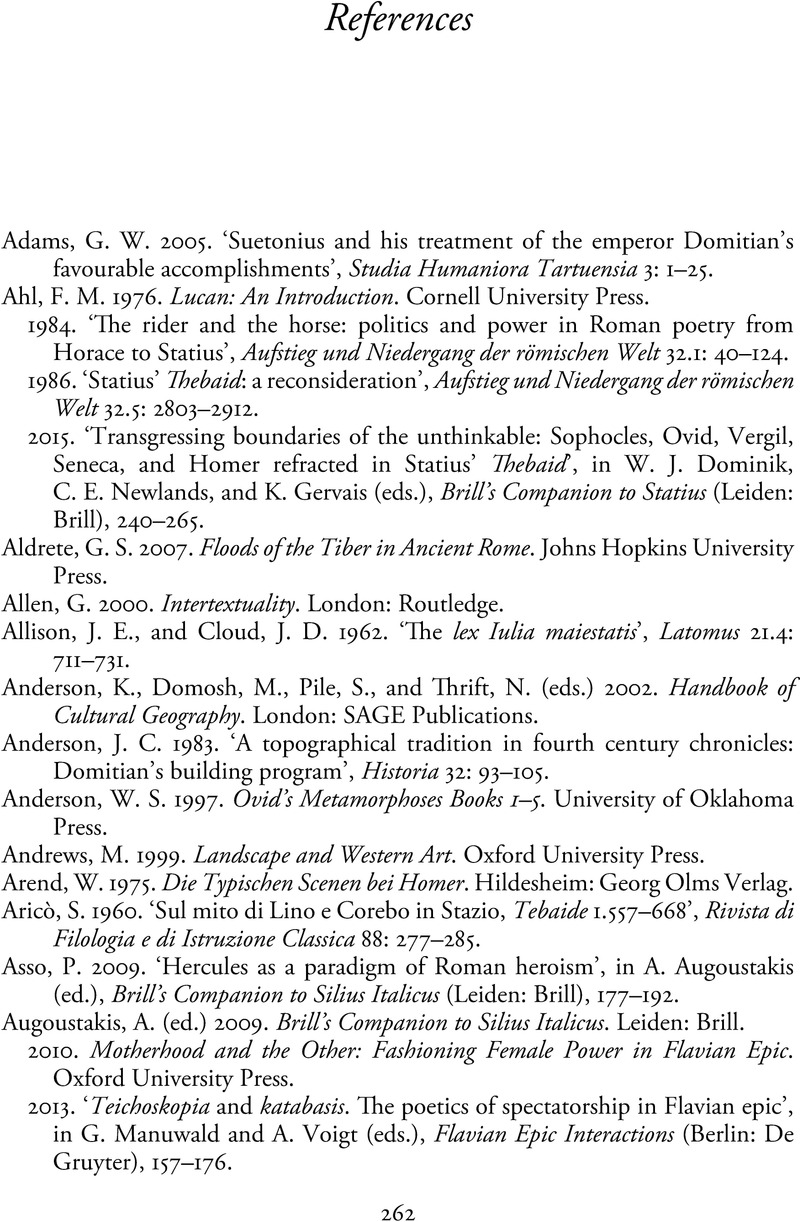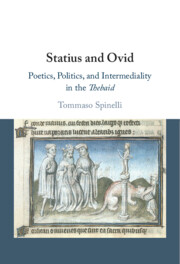Book contents
- Statius and Ovid
- Statius and Ovid
- Copyright page
- Contents
- Acknowledgements
- Note on Texts and Translations
- Abbreviations
- Introduction
- 1 The Post-Ovidian World of the Thebaid
- 2 Rewriting the Foundational Myths of Rome
- 3 Forging Divinity, Conceptualising Power
- Conclusion
- Appendix
- References
- Index Locorum
- General Index
- References
References
Published online by Cambridge University Press: 25 March 2024
- Statius and Ovid
- Statius and Ovid
- Copyright page
- Contents
- Acknowledgements
- Note on Texts and Translations
- Abbreviations
- Introduction
- 1 The Post-Ovidian World of the Thebaid
- 2 Rewriting the Foundational Myths of Rome
- 3 Forging Divinity, Conceptualising Power
- Conclusion
- Appendix
- References
- Index Locorum
- General Index
- References
Summary

- Type
- Chapter
- Information
- Statius and OvidPoetics, Politics, and Intermediality in the <I>Thebaid</I>, pp. 262 - 288Publisher: Cambridge University PressPrint publication year: 2024



